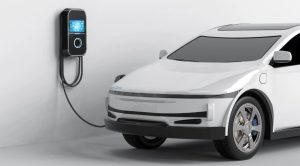
Rachel Reeves BIK Tax Changes | Gradual EV Rate Hikes with Green Incentives Intact
As the UK pushes forward with its green transport agenda, Chancellor Rachel Reeves has announced significant changes to Benefit-in-Kind (BIK) tax rates, coming into effect from April 2025.
These reforms, unveiled in the 2024 Autumn Budget, outline a long-term roadmap for company car taxation, with a gradual increase in rates for electric vehicles and a shift in focus away from hybrids.
Designed to offer fiscal clarity and reinforce environmental goals, the new policy reshapes incentives across the fleet and business vehicle landscape.
What Are the New Benefit-in-Kind Tax Changes Introduced by Rachel Reeves?

Image – Source
The new Benefit-in-Kind (BIK) tax changes announced by Chancellor Rachel Reeves during the 2024 Autumn Budget mark a strategic evolution in vehicle taxation for the UK.
Designed to offer clarity over the next five years, these changes reflect the Government’s balancing act between fiscal responsibility and continued environmental commitments.
Under this revised structure, all company car users will be subject to a gradual adjustment in tax bands, with electric vehicles seeing incremental increases but retaining favourable treatment.
Petrol, diesel, and hybrid vehicles face more substantial changes, particularly after the 2028/29 fiscal year.
This approach reflects a need to transition the fleet market and company car drivers more decisively towards electric vehicles (EVs), while also ensuring the UK’s tax base keeps pace with shifting vehicle ownership trends.
How Will the New BIK Rates Affect Electric Vehicles?
Electric vehicles have, over recent years, benefitted from a remarkably low BIK rate — often as low as 2% — a measure introduced to stimulate adoption in both corporate fleets and individual users.
The updated rates show an intent to phase in higher taxation without abruptly removing the incentive for zero-emission motoring.
Gradual Tax Increases for EVs from 2025 to 2030
The BIK rates for EVs will rise incrementally each year:
| Tax Year | BIK Rate for EVs |
| 2025/26 | 3% |
| 2026/27 | 4% |
| 2027/28 | 5% |
| 2028/29 | 7% |
| 2029/30 | 9% |
These gradual steps are calculated to give employers, employees, and vehicle providers adequate time to plan ahead. The logic here is to maintain confidence in the EV market, ensuring it remains an attractive option even with a modest rise in associated tax burdens.
Comparison to Petrol and Diesel BIK Rates
Despite the rises, electric vehicles will continue to enjoy a significant tax gap when compared with petrol and diesel cars. For example, BIK rates for a standard petrol car can start at 25% and go as high as 37%, depending on the vehicle’s CO₂ emissions.
This continued tax advantage highlights the Government’s clear directive: EVs should remain the most fiscally attractive choice for company car users.
Continued Advantages for EV Drivers
These favourable tax treatments are particularly impactful within salary sacrifice schemes. Employees opting for electric cars through such schemes can save thousands annually due to the lower income tax and National Insurance Contributions (NICs) that apply under BIK rules.
It’s also worth noting that fleet managers and HR departments continue to favour EVs in company car policies as they reduce corporate tax exposure and help businesses meet sustainability goals.
What Do These Changes Mean for Hybrid Vehicle Owners?

While hybrid vehicles — particularly plug-in hybrids (PHEVs) — have traditionally been a bridge technology offering low BIK rates for low emissions, this position is being reevaluated in the updated policy landscape.
Current BIK Structure for Plug-in Hybrids
As it stands, hybrids with emissions between 1-50g/km are taxed on a sliding scale depending on their electric-only range.
Vehicles capable of driving over 130 miles in electric mode can attract BIK rates as low as 5%. Those with lower electric ranges typically fall between 8% to 14%, depending on the exact specification.
This approach recognised the partial environmental benefits of hybrid technology while incentivising manufacturers to improve battery range.
Steep Increases from 2028/29 Onwards
From 2028/29, a major policy shift will occur. The existing electric range-based structure will be removed. Instead, all vehicles within the 1-50g/km emission range will be assigned a flat BIK rate of:
- 18% in 2028/29
- 19% in 2029/30
This change eliminates the competitive edge that more efficient PHEVs once had and consolidates the Government’s position in support of fully electric vehicles.
Impact on Hybrid Vehicle Incentives
The consequence is twofold. First, drivers currently in or considering hybrid vehicles may find their total cost of ownership rising more sharply than expected in a few years.
Second, manufacturers may be less inclined to invest in hybrid development and shift focus entirely to full-electric drivetrains.
Fleet managers may start phasing out plug-in hybrids from their procurement pipelines ahead of the 2028 tax changes, especially in long-term lease or contract hire arrangements.
How Are Petrol and Diesel Cars Affected by the New Policy?
Internal combustion engine (ICE) vehicles will continue to see their tax burdens increase under the updated BIK regime. This reflects both environmental policy and the Government’s long-standing intention to disincentivise the use of high-emission vehicles.
Incremental Increases for CO₂-Heavy Vehicles
Cars with CO₂ emissions between 51g/km and 54g/km will be subject to a BIK rate of:
- 19% in 2028/29
- 20% in 2029/30
As emissions increase, BIK rates follow a sliding scale, reflecting the proportional environmental impact of the vehicle. This approach encourages companies and drivers to opt for lower-emission models where possible.
Maximum BIK Rate Cap Raised
Currently, the maximum BIK rate of 37% applies to the most polluting vehicles (those emitting 160g/km or more). However, under the new policy, this cap will rise to:
- 38% in 2028/29
- 39% in 2029/30
This further penalises older, high-emission models still in circulation and may encourage companies to retire ageing fleet vehicles sooner.
Diesel Surcharge Continuation
The existing 4% diesel surcharge remains in place for vehicles not meeting Real Driving Emissions Stage 2 (RDE2) standards. For example, a non-compliant diesel car with a base BIK rate of 30% would face a 34% rate, up to a 39% cap.
This policy maintains pressure on drivers and businesses to avoid outdated diesel technology, aligning with clean air objectives in major cities like London, Birmingham, and Manchester.
What Are the Implications for Business and Fleet Users?

The changes introduced by Rachel Reeves carry significant operational and financial implications for businesses, particularly those with large vehicle fleets or extensive use of company car schemes.
Effect on Company Car Fleets and Salary Sacrifice Schemes
As BIK rates increase, businesses must reassess the financial viability of their company car offerings. For organisations offering salary sacrifice schemes, the continued attractiveness of EVs ensures these schemes remain a practical tool for employee engagement and environmental responsibility.
However, businesses must now forecast rising costs over time, especially if hybrid or ICE vehicles are still part of their fleets.
Strategic Shift Toward EVs by Businesses
Many businesses will likely use these policy changes as a trigger to accelerate their EV transition strategies.
Procurement departments may start prioritising models with lower long-term tax liabilities, and fleet managers will be under pressure to ensure compliance with broader environmental, social and governance (ESG) goals.
This also creates opportunities for manufacturers and leasing firms to offer more flexible, EV-centric packages tailored for corporate customers.
Estimated Financial Impact on Employers and Employees
According to HMRC estimates, these tax changes will generate:
- £135 million in 2028/29
- £210 million in 2029/30
This indicates that many employers and employees will face increased tax bills unless they transition to cleaner vehicles.
While modest on a per-vehicle basis, the impact across large fleets could be significant — necessitating tighter control of vehicle selection and lifecycle management strategies.
Why Is the Government Prioritising Electric Vehicles Over Hybrids?
The recent BIK changes clearly illustrate the Government’s evolving stance on sustainable transport. While hybrids once played a crucial role in bridging the gap between ICE and EVs, their role is now being minimised in favour of fully electric solutions.
Alignment with UK’s Net Zero Strategy
The Government’s net zero target by 2050 depends on drastically reducing transport-related emissions, which currently account for nearly a third of the UK’s total carbon output. Prioritising fully electric vehicles helps to close this emissions gap more rapidly and effectively than hybrids.
Long-Term Environmental Goals
While hybrids offer a reduction in emissions, they still rely on fossil fuels. Full electrification of transport is the only way to completely eliminate tailpipe emissions, which is why the tax policy now favours EVs almost exclusively.
This approach is consistent with other policies, such as the ban on new petrol and diesel car sales set to take effect in 2035.
Government Stance on Hybrid Technology
By gradually phasing out hybrid tax incentives, the Government is sending a strong message to the automotive industry and to consumers: hybrids are no longer seen as a long-term solution.
This stance is supported by advancements in EV range, battery durability, and infrastructure investment, all of which reduce the need for transitional technologies like hybrids.
How Much Revenue Will the Treasury Generate from These Changes?

While environmental motivations are front and centre, the financial implications for the exchequer are equally important.
HMRC Projections for 2028/29 and 2029/30
Revenue generation from the new BIK structure is expected to be:
- £135 million in 2028/29
- £210 million in 2029/30
This growth comes from increased tax liabilities on hybrid and ICE vehicles, alongside a broader company car base that is likely to continue expanding as businesses offer EVs as employee benefits.
Broader Fiscal Impact of Revised BIK Structures
These numbers may seem modest in comparison to overall Government spending, but they play an essential role in funding green infrastructure — including public EV charging networks and renewable energy integration for transport systems.
The BIK revenue is also a crucial lever to ensure tax equity as vehicle usage shifts further away from traditional fuel tax models.
Conclusion
Rachel Reeves’ revisions to the Benefit-in-Kind tax regime present a calibrated approach to maintaining environmental incentives while increasing revenue and reflecting market maturity.
Although EV drivers will face slightly higher rates over time, they will continue to enjoy significant advantages.
For hybrid and fossil-fuel vehicle users, the changes represent a clear policy shift that may influence future vehicle choices.
FAQs About Rachel Reeves BIK Tax Changes
Will EVs still be cheaper than petrol or diesel cars under BIK?
Yes, even with the new increases, electric vehicles maintain a much lower BIK rate compared to petrol and diesel vehicles, making them more cost-effective in most cases.
When do the new BIK rates officially start?
The first stage of the updated rates came into effect in April 2025, with annual changes scheduled through to 2030.
Are hybrids still a cost-effective choice for company car users?
Hybrids are becoming less tax-efficient under the new rules, particularly from 2028 when the BIK rates flatten regardless of electric range.
How will this affect drivers using salary sacrifice schemes?
Drivers on salary sacrifice schemes will still benefit significantly from EVs, although the savings may reduce slightly over time as BIK rates increase.
What’s the maximum BIK rate possible under the new system?
The maximum rate will rise to 39% by 2029/30 for high-emission vehicles, up from the current cap of 37%.
Why is there a surcharge for diesel vehicles?
Diesel cars that don’t meet RDE2 standards face a 4% surcharge as part of the Government’s efforts to reduce harmful emissions from older technologies.
Is there any plan to revise these BIK rates again in the future?
As vehicle technology and environmental goals evolve, it is likely that future Governments will revisit BIK rates and adjust them accordingly.
Featured Image – Source





